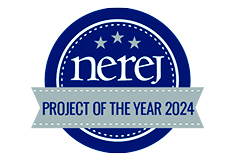News: Spotlights
Posted: June 23, 2011
Building owners expect energy price spike
Eighty percent of building owners expect double-digit energy price increases over the next year, which has prompted an average energy reduction target of 12%, according to Johnson Controls annual global energy efficiency indicator survey of nearly 4,000 building owners and operators around the world. Lighting and heating, ventilation, air conditioning and controls improvements are the most popular energy efficiency improvements.
The primary motivation for energy efficiency projects continued to be energy cost savings. Government incentives and enhanced public image were also important, ranking second and third in the survey. Greenhouse gas reduction, which ranked as the second highest motivator in 2010, ranked fourth in 2011.
Access to funding topped the list of barriers to energy efficiency projects for respondents in the U.S./Canada (38%) and Europe (30%).
Nearly 40% of respondents achieved at least one green building certification, twice as many as the prior year. An additional 32% have incorporated green building elements. The 39% of building owners planning to pursue green building certifications for existing buildings slightly the 35% with plans to certify new construction.
The research also found that building owners have greater access to energy data, but few are taking advantage of it. More than 80% measure and record data at least weekly or monthly, but fewer than 20% review and analyze that data at least weekly. Those who have implemented smart grid/smart building technology such as advanced energy metering and management systems are nearly 3 times more likely to review and analyze their data frequently.
Organizations that set a reduction goal, analyze energy data frequently, add internal or external resources, and use external financing were found to implement four times as many improvement measures as those who did none.
And more good news for vendors, 77% of U.S./Canada building owners plan to include green building elements in their facility plans in the next 12 months.
Article reprinted from June 16, 2011 Environmental Leader.
Tags:
Spotlights
MORE FROM Spotlights
The New England Real Estate Journal presents the First Annual Project of the Year Award! Vote today!
The New England Real Estate proud to showcase the remarkable projects that have graced the cover and center spread of NEREJ this year, all made possible by the collaboration of outstanding project teams. Now, it's time to recognize the top project of 2024, and we need your vote!

Quick Hits







.png)